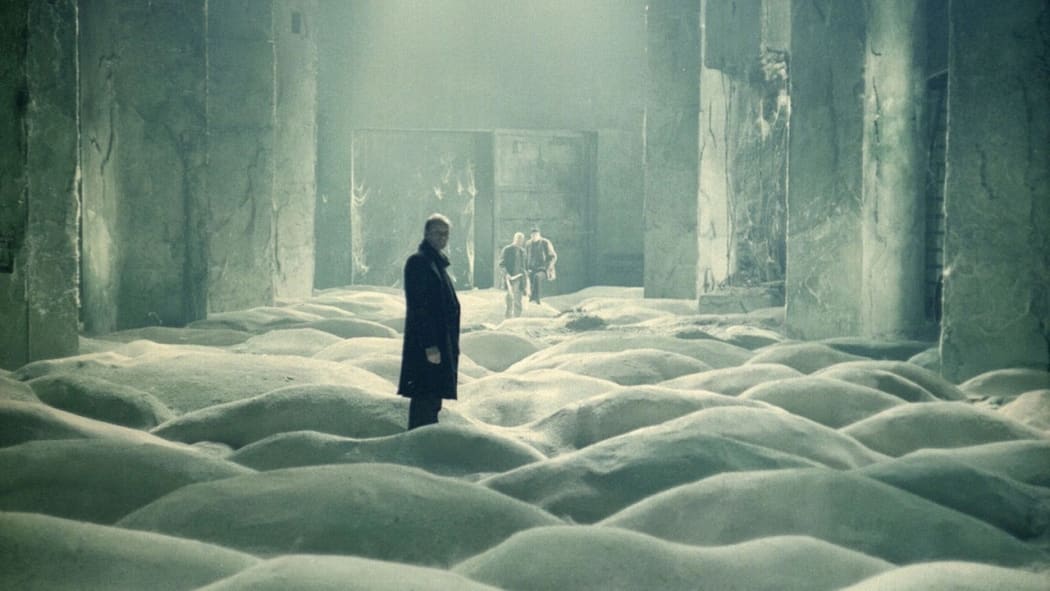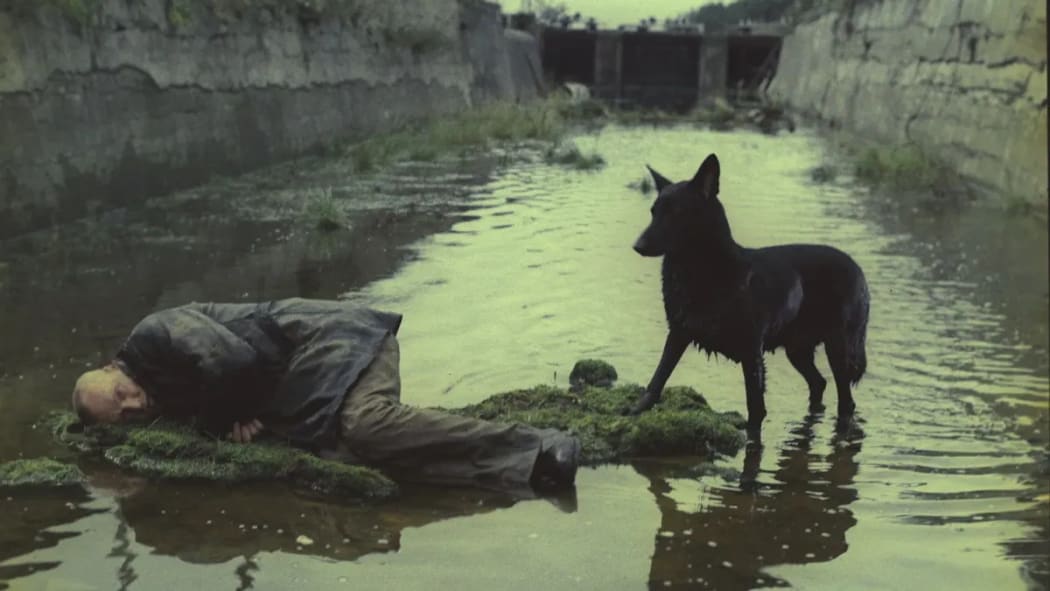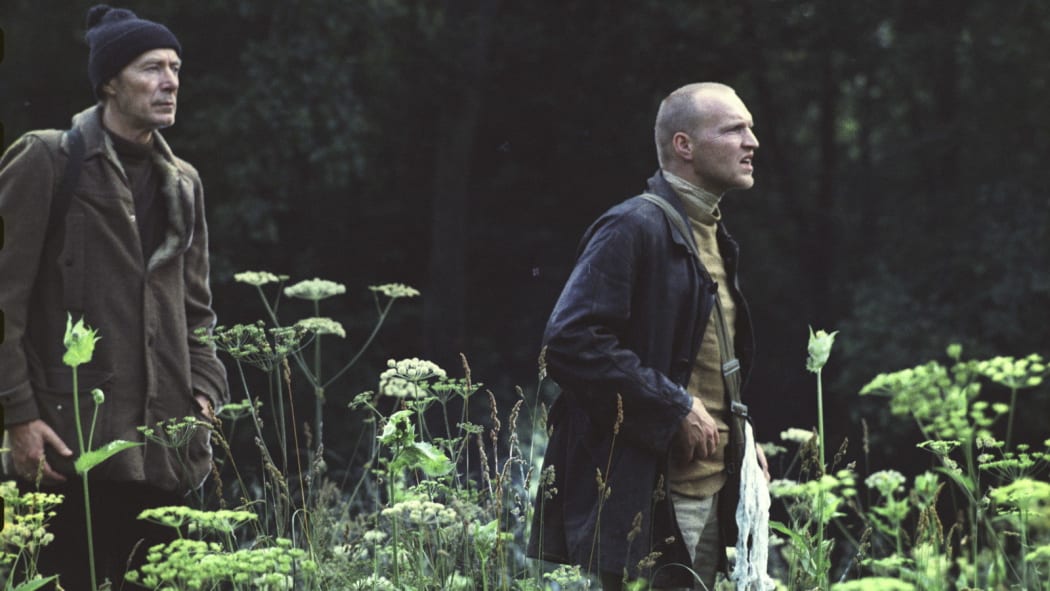Two entries in the Sight & Sound Top 50 greatest films of all time share 43rd place and while both are a challenge to track down, this Soviet classic rewards all the effort, according to Dan Slevin.

Photo: Janus Films
For a lot of people, when you use the term arthouse a film like Stalker is what will come to mind. A long, drab, dour, philosophical treatise by a serious chain-smoking Russian that resists easy understanding and probably requires multiple viewings to get anything out of at all.
And yet, for many cinephiles, Stalker is one of the most rewarding films on this list, with ‘journey into the heart of darkness’ parallels with another 1979 entry, Coppola’s Apocalypse Now (#19).
In 2012, Stalker was as high as #29 but its reputation has clearly depreciated, possibly due to fashion but also inaccessibility. A length of two hours and forty minutes is also an obstacle for modern audiences (unless you are Scorsese, of course).

Photo: Janus Films
So, why does it belong here?
Because it deals with the deepest spiritual and philosophical questions about the modern condition, our inability to fully understand – let alone control – our own deepest desires, and the increasing environmental degradation that we are subjecting ourselves and our planet to. Indeed, to a modern audience that might be the most prescient aspect of the whole movie.
The film is set in and around an area called the ‘Zone’, a dangerously contaminated and off-limits to anyone not authorised by the government. ‘Stalkers’ are guides who can get visitors in and through the many traps and dangers that the Zone presents, to the epicentre of the danger, a building which may contain evidence of extra-terrestrial occupation but which promises to grant the visitor their greatest wish.

Photo: Janus Films
Our Stalker, Alexander Kaidanovsky, guides a Writer (Anatoly Solonitsyn) and a Professor (Nikolai Grinko) through the many hazards until they reach their goal and discover what it actually is that the Room will give to visitors.
Stalker was a famously troubled production. Director Andrei Tarkovsky (Andrei Rublev, #67 & Mirror, #31) and several others in the crew were made ill by the extended exposure to the toxic sludge they found around the abandoned Estonian industrial plants where they were filming. He eventually succumbed to cancer in 1986 at the age of only 54.
In addition to the environmental challenges, the first year (!) of filming had to be abandoned when the Soviet film lab botched the processing of the Western Kodak stock they had been shooting on. There are some estimates that the exteriors of the film had to be shot three times before Tarkovsky found them acceptable.
Stalker is a film that requires multiple viewings to fully appreciate. I’m up to three and due for another sometime soon.
Arguably, the best way to appreciate a second or third viewing is to watch it scene-by-scene while reading Geoff Dyer’s wonderful book, Zona: A Book About a Film About a Journey to a Room, a close reading – a very close reading – of the film punctuated by many fascinating Dyer-esque tangents.
If you give the film a go and find yourself frustrated at the painstaking pacing – only 142 shots in 160 minutes – then Tarkovsky had a message for you:
“The film needs to be slower and duller at the start so that the viewers who walked into the wrong theatre have time to leave before the main action starts.”
Stalker is currently (almost) unavailable in Aotearoa on any streaming or rental platform except for the Mosfilm YouTube channel where it screens in gorgeous, grubby, 1080 high-definition but – and this might be a big but for you – the English subtitles are machine generated translations of the machine generated Russian subtitles. This may be an abstraction too far, or may just add to the general air of mystery around the film.
If that doesn’t work for you, there’s physical media. Aro Street Video has a DVD available for rent or purchase, Alice in Videoland has it on DBD and Blu-ray for rent, Wellington City Library has it but Auckland City Library does not.
Also, in the early 80s, the Soviet Embassy donated a 35mm copy of the film to the Wellington Film Society and it was stored for a long time under the seating block at the Paramount Theatre. I presume it was saved with the rest of the collection when the Paramount closed but I don’t know where it is now.
It is part of the canon, though, so you can expect it to show up online at somewhere like Mubi or Kanopy at some point in the future.
Dan Slevin is spending 2023 watching each of the Top 50 Greatest Films of All Time (according to the BFI/Sight & Sound magazine).

